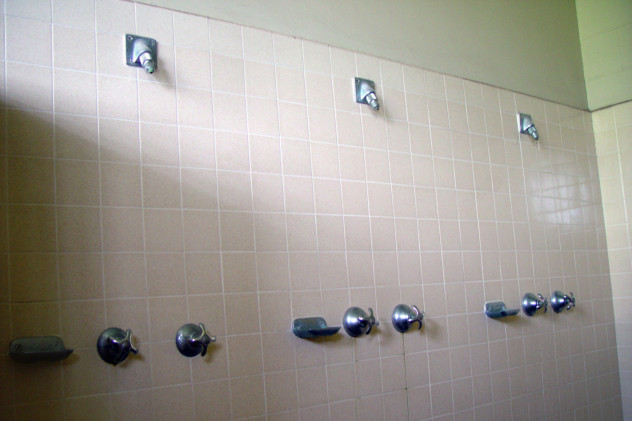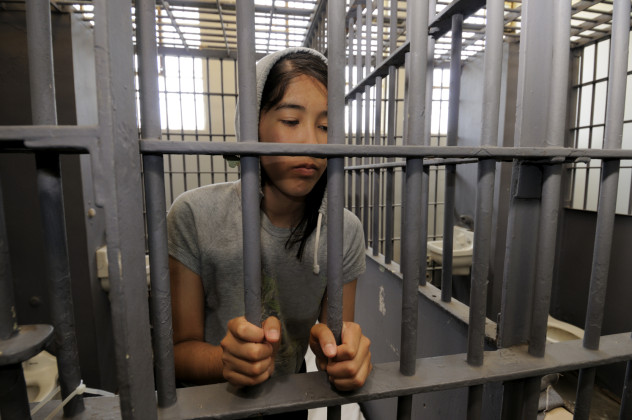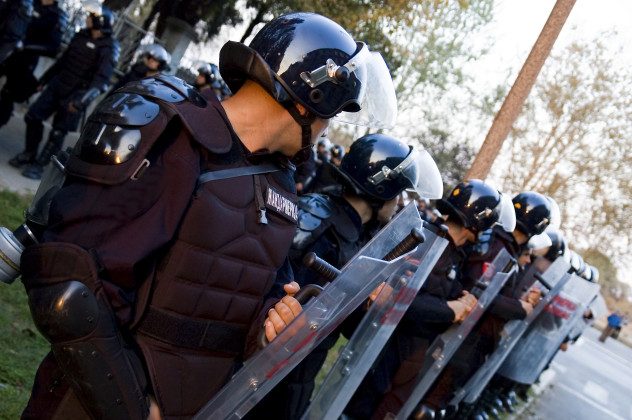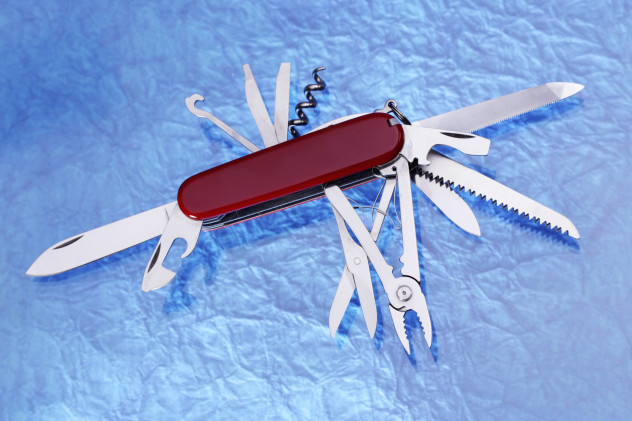 Weird Stuff
Weird Stuff  Weird Stuff
Weird Stuff  Animals
Animals 10 Inspiring Tales of Horses Being Human
 Mysteries
Mysteries Top 10 Haunting Facts About the Ghost Ship MV Alta
 History
History 10 Surprising Stories About the Texas Rangers
 Humans
Humans 10 Philosophers Who Were Driven Mad by Their Own Theories
 Miscellaneous
Miscellaneous 10 Video-Game-Worthy Weapons and Armors from History
 Weird Stuff
Weird Stuff 10 Psychics Who Accurately Predicted Wartime Events
 The Arts
The Arts 10 Pieces of Art Inspired by a Broken Heart
 Health
Health 10 Science Fiction-Sounding New Medical Treatments
 History
History 10 Surprising Facts About the Father of Submarine Warfare
 Weird Stuff
Weird Stuff 10 Times Real Laws Were Based on Bizarre Hypotheticals
 Animals
Animals 10 Inspiring Tales of Horses Being Human
 Mysteries
Mysteries Top 10 Haunting Facts About the Ghost Ship MV Alta
Who's Behind Listverse?

Jamie Frater
Head Editor
Jamie founded Listverse due to an insatiable desire to share fascinating, obscure, and bizarre facts. He has been a guest speaker on numerous national radio and television stations and is a five time published author.
More About Us History
History 10 Surprising Stories About the Texas Rangers
 Humans
Humans 10 Philosophers Who Were Driven Mad by Their Own Theories
 Miscellaneous
Miscellaneous 10 Video-Game-Worthy Weapons and Armors from History
 Weird Stuff
Weird Stuff 10 Psychics Who Accurately Predicted Wartime Events
 The Arts
The Arts 10 Pieces of Art Inspired by a Broken Heart
 Health
Health 10 Science Fiction-Sounding New Medical Treatments
 History
History 10 Surprising Facts About the Father of Submarine Warfare
10 Things ‘Orange Is The New Black’ Gets Wrong About Prison (According To An Inmate)
The Netflix series Orange Is the New Black pretty much pegs the female prison experience. But there are errors—excusable ones—probably made for the purpose of dramatic effect or economy of story. Still, Orange leaves the audience in the dark about how—and why—prisons really run. Having served six years at York Correctional Institution in Niantic, Connecticut, I know that there are 10 things Orange gets wrong about modern corrections.
10 Nudity In A Group Bathroom

Out of all the jokes about prison, rape is the most frequent punchline. The sad thing is that the “don’t drop the soap” jokes are not pure comical speculation. Rapes are perpetrated in prisons, even women’s facilities.
The government officially stepped in to stop the prison rape culture a mere 11 years ago when the US Congress passed the Prison Rape Elimination Act and required wardens to adopt a no-tolerance policy for any type of physical violation. Under this federal statute, even friendly clapping of another inmate’s behind is sexual assault.
A warden who allows women to walk in and out of showers topless or naked would be risking increased sexual misbehavior and losing his job. If she allowed gratuitous nudity in a real prison, Fig, the deputy warden, would never have had an opportunity to commit financial fraud—she would have already been axed.
9 Sliced Tomatoes On Meal Trays

Fresh food is scarce in prisons. But that’s not why prisoners never see tomatoes, particularly ones that are sliced. As oppressive and top-heavy as prisons may seem, they run on a principle of equality, namely that no inmate should be treated differently than another—everyone gets the same thing. Processed foods can be designed to be equal so prisons serve them often.
The reason for this is more than economy. Arrogance and entitlement are the engine of any criminal activity. Part of rehabilitation is learning that you are just like everyone else who has to follow the law, and there are no exceptions. No one gets a bigger piece of the pie, tomato, or anything else.
Every time the prison served a meal with two slices of bread, we ran into this issue with the ends of the loaves—the shrunken slices that are half crust and unevenly cut. Because those heels of the bread could not be considered equal, we could never serve them and were supposed to throw them out, wasting food. In their geometry, sliced tomatoes are worse than bread. They have ends, and their slices are rarely equal. We would never get them, no matter how cheap they might be, because not every inmate would receive the same portion.
8 Choosing Your Seat In The Dining Hall

In prison chow hall, seats fill sequentially, not by choice. If women can be vicious and exclusive when everything in their lives is going right, imagine the feminine nature when someone has lost her freedom, looks, family, and friends. No dining hall has enough space or chairs to accommodate exactly how unhappy women can become if they have a chance to reject one another, so we are forced to sit next to people we don’t like, with no choice at all.
Forcing people to sit together in a dining hall might seem like an invitation to bickering and belligerence, but the opposite happened in my experience. Prisons allow inmates a very short time to finish their meals. Handbooks usually contain rules that allow inmates 20 minutes to eat, but no one follows that rule. Prisoners get maybe 10 minutes to eat. The less motivation one has to talk to the woman in the next chair, the more likely it is that she will get her speed-eat on.
7 Staff Members Masturbating In Their Offices After An Inmate Leaves

This almost never happens. Usually they ask you to watch or help out. The relationship on the show between Daya and Officer Bennett is a little more serious and emotionally involved than the usual hit-and-run sex-ups in women’s prisons.
The Equal Opportunity Employment Act of 1972 confirmed men’s right to guard women in prisons. When you pen thousands of women and post men to watch them, sexual hijinks will ensue. It surprises most people to learn that a majority of guards in women’s prisons are men because the expected sexual tension—and exploitation—of such a setup is, well, a setup. Any sexual contact between an inmate and a guard is statutory rape under the Prison Rape Elimination Act. Blame the setup on gender equity.
6 A Man Meeting With Female Inmates Behind Closed Doors

That sexual tension creates a slippery slope, however. Just going behind a closed door with a female inmate is grounds for dismissal of a male member of the prison staff. Ideally, guards—especially male ones—are on camera with a female inmate at all times. Prison culture—and the culture of crime in general—conditions people to think that camera surveillance is the enemy. Too often we forget that cameras clear as often as they convict. Neither the guard nor the prisoner can be falsely accused of doing something to the other if someone is running tape on everything each one of them does.
But camera surveillance cannot coat every inch of the prison, so when a male employee or administrator meets with a female inmate in an office, he usually calls for a third-party witness. However, situations arise where an inmate must be interviewed alone to protect the integrity of protocol or an investigation. If no witness is available, or would threaten the process, the office door remains wide open.
5 Inmates Wearing Sunglasses, Hoodies, Earrings, And Scarves

Have you ever seen the old wanted poster for Ted Kaczynski, also known as the Unabomber? A hoodie and sunglasses helped him elude several federal task forces for years. Geraldo Rivera caught flak two years ago when he characterized hoodies as symbols of crime and gangsta culture after the Trayvon Martin shooting.
Whether they signify crime or are merely for fashion, no controversy exists over the sweatshirts’ ability to hide our identities. Inmates who did time with me may have worn scarves, shades, and hoodies to rob banks or stick up liquor stores. But they would never be allowed wear them in the joint because they could misbehave—steal something from the kitchen, pop someone in the eye, or escape—with their hoods up. Then, the guards and cameras wouldn’t know who the perp was.
Especially in a women’s prison, where jealousy wears its own inmate number, allowing inmates to change the look of their uniforms by accessorizing would only bring abuse and violence. Female correctional facilities want all prisoners to look the same: Bad.
4 Standing In The Hallway Or Dining Hall

All prisons structure movement of prisoners so that they cannot gather with others in groups. When Piper gets up and stops to talk to another inmate, she clogs up that structured flow and risks starting a riot. She would have been disciplined if the fictional Litchfield prison were like my real one.
I never witnessed a riot during my tenure as an inmate. And to someone who has never been in the slammer, the idea that one person stopping to talk could foment a melee may sound extreme. But a spontaneous riot is a real possibility, not because inmates are all violent animals but because we all share the same human nature. It’s just an instance of collective human behavior called the “Emergent Norm.”
When people are in close proximity to each other, individuals with unique behavior will stand out and others will eventually copy that behavior, regardless of how bad or bizarre it is, because they perceive it as the norm. In short, one bad manzana spoils the bunch. All it takes is one punch in a crowd to start a riot. Once the fight is on, everyone thinks they are doing what they are supposed to do if they punch, too. It happens in crowds often and is why the administration would never allow even two inmates to stop and form a mass of people that might explode. Just keep it moving.
3 Inmate Threatens Staff With Litigation And Gets What She Wants

In the second episode of the second season, “Looks Blue, Tastes Red,” Pennsatucky implies to Captain Healy that she will sue him because he stood by and watched Piper “beat the brakes off” her. Fearing exposure through a lawsuit, Healy arranges for the prison to reconstruct Pennsatucky’s busted grill and give her a brand new set of teeth. If ‘Tucky served time where I did and made that threat, she would still be chewing with choppers that look like chips of brown marble.
The normal rules of civil liability have slipped out of American prisons; quite frankly, it’s the inmates’ fault. One suit in Nevada sought damages for cruel and unusual punishment in violation of the Eighth Amendment when an inmate ordered two jars of creamy peanut butter from the commissary but received one creamy and one chunky. Then an inmate sued after a prison supposedly violated his religious freedom because he claimed his religion required him to enjoy a steak and wine dinner that the prison food service would not provide. It becomes obvious why the courts started throwing out inmate-initiated civil suits years ago.
People speak of suing prisons all the time, but it is almost impossible to do so because of a legal doctrine called “Sovereign Immunity,” which means that the government cannot be sued for any actions of its employees if they acted within their statutory authority. And almost anything that a guard does to an inmate is within his statutory authority. Courts see prisoners as subhuman and perpetual threats to the safety of prison employees, so they sanction abuse. Even in the most egregious examples of maltreatment in a correctional facility, no government employee will be held responsible. It’s just a reality. Pennsatucky had no chance, and Healy would have been off the hook.
2 Decorating With Christmas Lights And Festive Trimmings

Ironically, holidays in prison are not as hard as people might expect. I think the reason that Thanksgiving and Christmas never bothered me is that it never felt or looked like a holiday inside. For six years, I missed the black and orange Halloween blitz that bombs retail stores around Labor Day. Except for holiday specials on TV, I didn’t witness the fancy snowflake decorations and holiday carols. People think a little decoration might distract the inmate from her drab and sad surroundings, but it actually reminds her of what she’s missing.
There are no pumpkins or garlands—not to strangle the holiday spirit—but to keep everyone alive for New Year’s Eve. According to the National Center on Institutions and Alternatives, the prison suicide rate is half of what it used to be 30 years ago. It may not seem like a lot, but 330 inmates kill themselves each year while behind bars, three times the suicide rate in society at large. Ninety-three percent of those suicides are committed by hanging. Leaving a strong, lengthy cord within the inmates’ sight? Never. Someone would be swinging within the hour. Prisons aren’t supposed to provide nooses.
1 Inmates Accessing Tools And Tweezers

In Orange, Piper lost a screwdriver in her coat pocket and the warden locked Litchfield prison down for one hour and then released the lockdown without even finding it. Moreover, Piper avoided discipline for this. Where I was, guards cuffed and marched an inmate to solitary when she picked up a screw that had fallen from the ceiling in the commissary warehouse and handed it over to her supervisors. At least twice a year, York Correctional Institution entered emergency lockdown status because something metal went missing and theoretically could have been fashioned into a weapon.
The lost items ran the gamut. From keys stolen from a prison school employee—which can be placed between fingers, making a barbed fist—to the connector from a fetal heart rate monitor that no one unclipped from a pregnant woman’s shirt before she left the facility, to a sewing needle from the workplace that sews uniforms. Losing these items froze the entire prison for days until the lost items were accounted for.
People might not know this about prisons, but from personal experience I can let them in on a little secret: There are criminals in there. No one wants to arm them.
Orange sanitizes prison in very subtle ways. Sometimes the difference between Orange and a real prison is the difference between life and death. Orange is a terrific show and very funny, but real prison is no joke.
Chandra Bozelko was Inmate Number 330445 at York Correctional Institution in Niantic, Connecticut and is the author of Up The River Anthology. She writes about prison at Prison Diaries.








